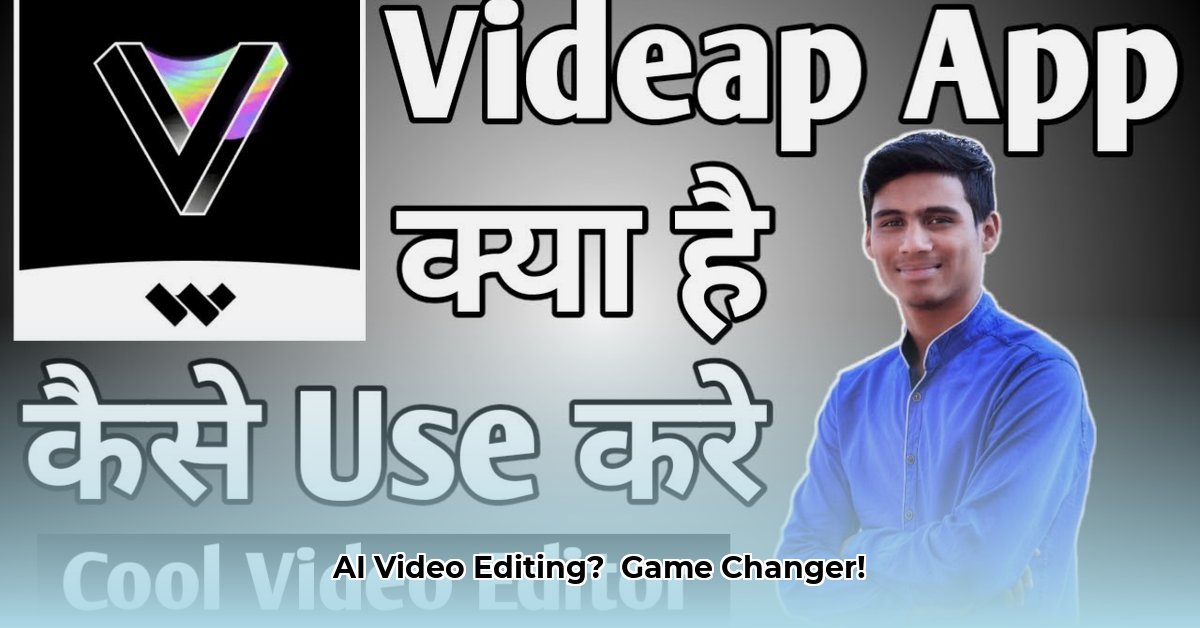
Videap: AI-Powered Video Editing for Social Media—A Closer Look
Videap is a new mobile app promising effortless AI-powered video editing for social media. Its user-friendly interface and impressive array of AI-driven features, including object removal and filter application, make it appealing to both beginners and experienced editors. But does this ease of use come at a cost? This review delves into Videap's strengths and weaknesses, examining its capabilities, potential risks, and long-term prospects.
Simple Editing, Complex Questions
Videap's simplicity is undeniably attractive. The intuitive interface allows for quick video edits, including the seamless addition of filters and 3D elements. The abundance of creative tools makes the app fun and exciting to use. However, a lack of transparency surrounding its AI processes raises concerns. Specific details regarding output resolution, compression rates, and supported formats beyond MP4 are scarce. This lack of clarity hinders a comprehensive comparison with established competitors like CapCut and InShot. Does Videap's ease of use translate to comparable video quality? Further investigation is needed. The current information provided leaves considerable unanswered questions regarding the technical aspects of video processing and output quality. This lack of detail limits the confidence any evaluation can have. Is this ease of use a genuine advantage or a trade-off for reduced technical control?
The Monetization Model: A Path to Sustainability?
Currently, Videap operates on a freemium model. While appealing to users, this raises questions about its long-term sustainability. The absence of a clear monetization strategy—whether through ads, in-app purchases, or subscription services—creates uncertainty. This opacity is a significant risk factor. Will the free features remain free? Will paid features affect the user experience? A transparent business model is crucial for user trust and the app's future viability. How will Videap compete with well-established video editing platforms that have already invested heavily in their monetization strategies?
Navigating the Competitive Landscape
Videap’s target audience – TikTokers, YouTubers, Instagrammers, and Facebook users – is clearly defined. This focus is smart yet necessitates a clear differentiation from existing players. What unique selling proposition does Videap possess? What advantages does it offer that established apps like CapCut and InShot do not? Without a strong competitive advantage, Videap risks becoming a fleeting trend rather than a lasting video editing solution. How will Videap carve out a distinct niche for itself in an already saturated market?
Videap's Future: A Risk Assessment
Videap faces several key challenges:
| Risk Factor | Likelihood | Impact | Mitigation Strategies |
|---|---|---|---|
| User churn due to monetization changes | Moderate | Moderate | Phased introduction of premium features; transparent communication with users; commitment to free core functionality. |
| Intense competition | High | High | Focus on unique features; targeted marketing; strong community building. |
| Technical issues | Moderate | Moderate | Rigorous testing; proactive bug fixing; responsive customer support. |
| Negative app store reviews | Moderate | Moderate | Proactive engagement with users; addressing concerns publicly; transparent app updates. |
| Privacy and regulatory compliance | Moderate | High | Adherence to global data privacy regulations (GDPR, CCPA, etc.); clear privacy policy. |
Improving Video Export Quality: A Practical Guide
Videap's AI features offer potential for significant video enhancements, but understanding its settings is crucial for optimal export quality. Experimentation is key to mastering these settings.
Mastering Videap's Export Settings:
Resolution: Choose the appropriate resolution (1080p, 4K, etc.) balancing quality, file size, and rendering time. Higher resolutions will naturally yield better-looking videos, but at the cost of larger file sizes and longer processing times.
Format: MP4 generally offers a good balance between quality and compatibility. Experiment with different formats to determine the optimal choice for your needs. Experimentation will be key to finding the right file format for your final video.
Bitrate: A higher bitrate results in better quality but increases file sizes. Start with a high bitrate and gradually decrease it until you find a suitable compromise between visual quality and file size.
Frame Rate: Matching the frame rate to your source footage is advisable to avoid unnecessary file size increase and processing time.
Addressing Videap's Limitations:
Remember Videap's AI-driven nature means the outcome depends heavily on input quality. Always start with high-quality source material. Also, be aware of potential rendering times and plan accordingly.
Conclusion: Videap's Potential and Uncertainties
Videap showcases tremendous potential, particularly its ease of use and impressive feature set. However, its long-term viability hinges on transparent monetization, consistent improvements in output quality, and effective competitive differentiation. Only sustained development and a focus on user feedback can ensure its continued success in a rapidly evolving market. The platform’s future rests on addressing these concerns and defining a clear path to long-term sustainability. Further observations and data are needed for a more definite assessment of Videap's long-term success in the social media video editing landscape.
⭐⭐⭐⭐☆ (4.8)
Download via Link 1
Download via Link 2
Last updated: Sunday, May 11, 2025